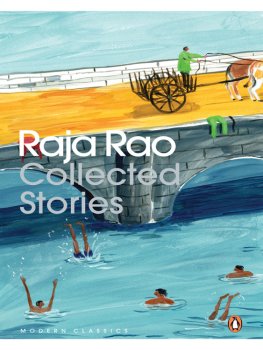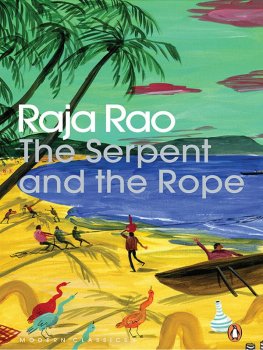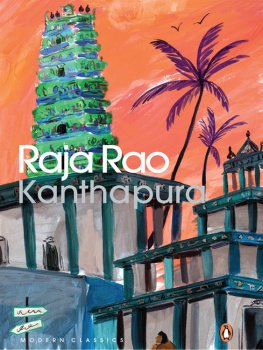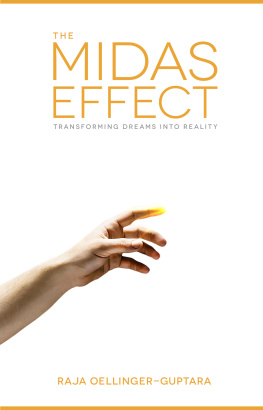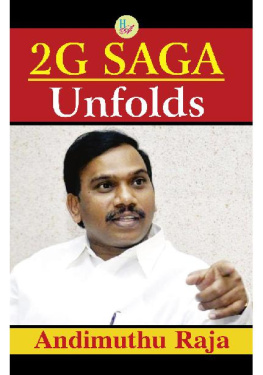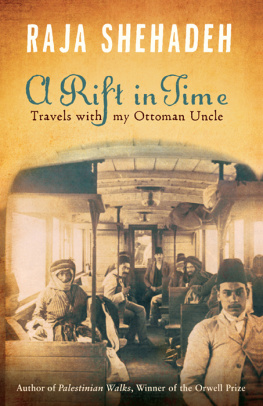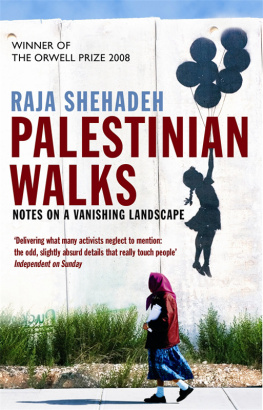Raja Rao - Collected Stories
Here you can read online Raja Rao - Collected Stories full text of the book (entire story) in english for free. Download pdf and epub, get meaning, cover and reviews about this ebook. year: 2014, publisher: Penguin, genre: Prose. Description of the work, (preface) as well as reviews are available. Best literature library LitArk.com created for fans of good reading and offers a wide selection of genres:
Romance novel
Science fiction
Adventure
Detective
Science
History
Home and family
Prose
Art
Politics
Computer
Non-fiction
Religion
Business
Children
Humor
Choose a favorite category and find really read worthwhile books. Enjoy immersion in the world of imagination, feel the emotions of the characters or learn something new for yourself, make an fascinating discovery.
Collected Stories: summary, description and annotation
We offer to read an annotation, description, summary or preface (depends on what the author of the book "Collected Stories" wrote himself). If you haven't found the necessary information about the book — write in the comments, we will try to find it.
Raja Rao: author's other books
Who wrote Collected Stories? Find out the surname, the name of the author of the book and a list of all author's works by series.
Collected Stories — read online for free the complete book (whole text) full work
Below is the text of the book, divided by pages. System saving the place of the last page read, allows you to conveniently read the book "Collected Stories" online for free, without having to search again every time where you left off. Put a bookmark, and you can go to the page where you finished reading at any time.
Font size:
Interval:
Bookmark:
Raja Rao
Collected Stories
PENGUIN MODERN CLASSICS Collected Stories
RAJA RAO (19092006), a path-breaker of Indian writing in English, was born in Hassan, Mysore. After he graduated from Madras University, he went on to the University of Montpellier in France on a scholarship. He moved to the United States in 1966, where he taught at the University of Texas at Austin until 1980, when he retired as emeritus professor.
A powerful and profound writer, and a superb stylist, Rao successfully and imaginatively appropriated English for the Indian narrative. He was honoured with Indias second-highest civilian award, the Padma Vibhushan, in 2007, the Sahitya Akademi Award in 1964, and the Neustadt International Prize for Literature in 1988.
R. PARTHASARATHY is a poet and translator. The author of the long poem Rough Passage, he edited the influential anthology Ten Twentieth-Century Indian Poets. His translation of the fifth-century Tamil epic, the Cilappatikram, was awarded the 1995 Sahitya Akademi Award. He is a professor emeritus of English and Asian studies at Skidmore College in Saratoga Springs, New York. He was Raja Raos editor from 1974 to 1998.
INTRODUCTION
In 1929, a young Brahmin from Hyderabad in southern India set out for France, for Montpellier in fact, that ancient Greek and Saracenic town, so close to Ste where Valry was born,1 at the invitation of Sir Patrick Geddes (18541932), the Scottish town planner, who had established the Collge des cossais there. It was, however, at Soissons, where Abelard was imprisoned and condemned, that the Brahmin Raja Rao (19082006) wrote his first stories, Javni and The Little Gram Shop. Kanthapura was, for the most part, written in a thirteenth-century French castle in the Alps, and published in 1938 by Allen and Unwin.
Unless you be a pilgrim you will never know yourself.2 In his search for a guru, Rao wandered in and out of the ashrams of Pandit Taranath (18911942), near Mantralayam on the Tungabhadra River; Sri Aurobindo (18721950) in Pondicherry; Ramana Maharshi (18791950) in Tiruvannamalai; Narayana Maharaj (18851945) in Kedgaon, near Pune; and Mahatma Gandhi (18691948) in Sevagram, near Wardha. His search ended in 1943, in Trivandrum, when he met Sri Atmananda (18831959).
In 1947, Oxford University Press, Bombay published The Cow of the Barricades and Other Stories. Raos spiritual experiences as a Vedantin form the basis of his next two novels, The Cat and Shakespearepublished as The Cat in the Summer 1959 issue of the Chelsea Review, New York, and in 1965 by Macmillan and The Serpent and the Rope, published in 1960 by John Murray.
Rao moved to Austin, Texas in 1966 to begin teaching Indian philosophy at the University of Texas, a position he held till his retirement in 1980. In 1978, as his editor at Oxford University Press, Madras, I published The Policeman and the Rose: Stories. Meanwhile, in 1965, Raos fourth novel, Comrade Kirillov, had appeared in a French translation in Paris. And, finally, in 1988, exactly fifty years after the publication of his first novel, Vision Books, New Delhi published The Chessmaster and His Moves, the first volume of a trilogy, to be followed by The Daughter of the Mountain and A Myrobalan in the Palm of Your Hand. The novel was awarded the tenth Neustadt International Prize for Literature in 1988. Vision Books also published On the Ganga Ghat in 1993, and The Meaning of India, a collection of essays, in 1996.
One of the most innovative novelists of the twentieth century, Rao departed boldly from the European tradition of the novel, which he indigenized in the process of assimilating material from the Indian literary tradition. He put the novel to uses to which it had not perhaps been put before, by exploring the metaphysical basis of writing itself of, in fact, the word. In the Indian tradition, literature is a way of realizing the Absolute (Brahman) through the mediation of language.
As a writer, Raos concern is with the human condition rather than with a particular nation or ethnic group. Rao told me one pleasant February morning in 1976 in Adyar, Madras:
One of the disciplines that has interested me in Indian literature is its sense of sadhana (exercitia spiritualia) a form of spiritual growth. In that sense, one is alone in the world. I can say that all I write is for myself. If I were to live in a forest, I would still go on writing. If I were to live anywhere else, I would still go on writing, because I enjoy the magic of the word. That magic is cultivated mainly by inner silence, one that is cultivated not by associating oneself with society, but often by being away from it. I think I try to belong to the great Indian tradition of the past when literature was considered a sadhana. In fact, I wanted to publish my books anonymously because I think they do not belong to me. But my publisher refused.3
The house of fiction that Rao has built is thus founded on the metaphysical and linguistic speculations of the Indians. It is to the masters of fiction in our time, such as Proust and Joyce, that we must ultimately turn for a writer of comparable stature.
One of the difficulties a reader encounters in the presence of Indian literature in English is that of understanding the nature of the world projected by the text and, by implication, the strategies of discourse adopted by the writer to nativize the English language. Not enough attention has so far been paid to this in the Indian context, with the exception of Braj B. Kachrus study.4 Kachru examines the problem from the perspective of a sociolinguist. I will try, however, to explore its implications generally in the context of Indian literature in English, and specifically in the context of the fiction of Raja Rao. His fiction offers a paradigm of Indian literature in English with all its contradictions.
The preface to Kanthapura is revolutionary in its declaration of independence from English literature, and it has, as a result, become a classic stylistic guide for non-native English writers everywhere.
There is no village in India, however mean, that has not a rich sthala-purana, or legendary history, of its own. Some god or godlike hero has passed by the village. . the Mahatma himself, on one of his many pilgrimages through the country, might have slept in this hut, the low one, by the village gate. In this way the past mingles with the present, and the gods mingle with men to make the repertory of your grandmother always bright. One such story from the contemporary annals of my village I have tried to tell.5
Kanthapura is the story of how Gandhis struggle for independence from the British came to a remote village in southern India. The struggle takes the form, on the one hand, of non-violent resistance to Pax Britannica and, on the other, of a social protest to reform Indian society. References to specific events in India in the late 1920s and early 1930s suggest that the novel has grown out of a distinct historical context. Told by an old woman, Achakka, the story evokes the spirit and discourse of the traditional folk narratives, the puranas. In an attempt to elucidate Raos intentions, I shall examine the preface as an introduction to his own fiction.
Since the rise of the novel in the eighteenth century, its philosophical bias has been towards the particular; hence, its focus on the individual in an objective world. An entirely opposite view is expressed in The Serpent and the Rope: India is perhaps the only nation that throughout history has questioned the existence of the world of the object.6 When a non-native English writer such as Rao chooses this specific genre rather than one that is traditional to his own culture, the epic, for instance, and further chooses to project this genre in a second language, he takes upon himself the burden of synthesizing the projections of both cultures. Out of these circumstances, Rao has forged what I consider a truly exemplary style in Indian literature in English in fact, in world literature in English. He has, above all, tried to show how the spirit of one culture can be possessed by, and communicated in, another language.
Font size:
Interval:
Bookmark:
Similar books «Collected Stories»
Look at similar books to Collected Stories. We have selected literature similar in name and meaning in the hope of providing readers with more options to find new, interesting, not yet read works.
Discussion, reviews of the book Collected Stories and just readers' own opinions. Leave your comments, write what you think about the work, its meaning or the main characters. Specify what exactly you liked and what you didn't like, and why you think so.

